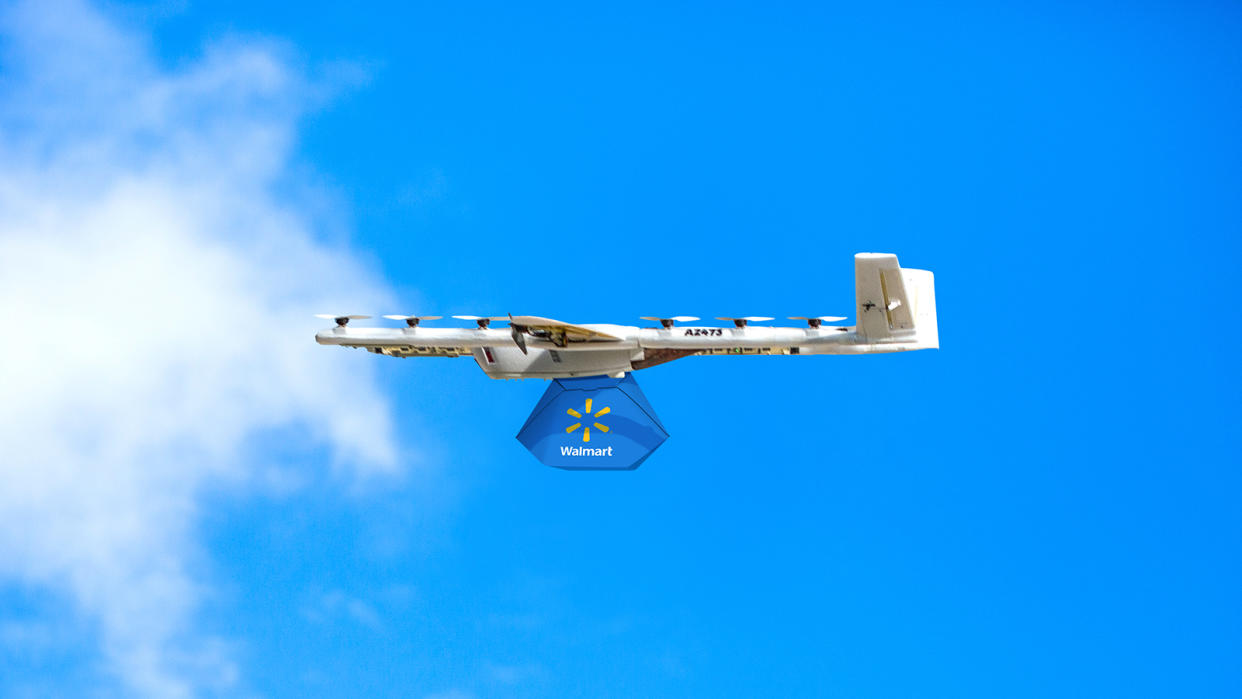What happens if you shoot down a delivery drone?

As deep-pocketed companies like Amazon, Google and Walmart invest in and experiment with drone delivery, a phenomenon reflective of this modern era has emerged. Drones, carrying snacks and other sundries, are being shot out of the sky.
Incidents are still rare. However, a recent arrest in Florida, in which a man allegedly shot down a Walmart drone, raises questions of what the legal ramifications are and whether those consequences could escalate if these events become more common.
In the Florida case, Walmart was conducting delivery demonstrations in Clermont, Florida — roughly 25 miles west of Orlando — when a loud sound was heard during the craft’s descent. According to the Lake County Sheriff’s Office, the suspect, Dennis Winn, allegedly admitted to shooting the drone. He allegedly told authorities this wasn’t his first experience with drones flying over and around his home, leading him to believe that the small, unmanned crafts might be spying on him.
The man was charged with discharging a firearm and “criminal mischief” resulting in damage of more than $1,000. For its part, Walmart claims that the amount totaled around $2,500, primarily involving the drone’s payload system.
It’s likely more drones will be shot down, considering the United States is home to more guns than people. And while last week’s incident isn’t without precedent, it's not entirely clear how stiff the consequences could become.
That’s due in large part to the fact that there haven’t been any high-profile cases wherein the shooter has received the maximum penalty. That could well change, however, as more multi-billion-dollar corporations stake their airspace. At this early stage, years of R&D costs coupled with very limited scalability means an extremely high per-drone price tag.
In 2022, for instance, Amazon was estimated to be spending $484 for every delivery made by a Prime Air drone. The price has come down since; optimistic projections had the figure dropping to around $63 in 2025. Even that is still nearly 20x the price of the average ground delivery.
Drone deliveries also haven’t scaled as quickly as Amazon had hoped. As of this writing, Prime Air is only available in one location -- College Station, Texas -- after operations ended in California. Two European locations and an another in the U.S. are set to arrive by the end of this year.
While consumer drones have been proliferating for well over a decade, the question of legal ramifications hasn’t been wholly clear.
The Federal Aviation Administration (FAA) gave us a partial answer following a 2016 drone shooting in Arkansas. At the time, the FAA pointed interested parties to 18 U.S.C. 32. The law, titled “Aircraft Sabotage,” is focused on the wanton destruction of “any aircraft in the special aircraft jurisdiction of the United States or any civil aircraft used, operated or employed in interstate, overseas, or foreign air commerce.”
At first glance, the law appears primarily focused on manned aircraft, including a provision that “makes it a Federal offense to commit an act of violence against any person on the aircraft, not simply crew members, if the act is likely to endanger the safety of the aircraft.” In responding to the Arkansas drone shooting, however, the FAA asserts that such protections can be interpreted to also include UAVs (unmanned aerial vehicles). The language does, indeed, appear broad enough to cover drones. That means, in turn, that the penalties are potentially as stiff.
The subject was revived after a 2020 incident in Minnesota. In that case, the suspect was hit with felony charges relating to criminal damage and discharging a weapon within city limits. Those would likely also be the charges in most scenarios involving property, rather than bodily damage, drone or not. Even with these examples, there is not a rigid rule that predicts if or when prosecutors might also introduce a federal charge like 18 U.S.C. 32.
As the legal blog Above the Law notes, in most cases, the federal government has deferred to state law for enforcement. Meanwhile, in most cases where 18 U.S.C. 32 has been applied, if a human crew/passengers are involved, there could be other potential charges like murder. It certainly can be argued that shooting a large piece of hardware out of the sky in a heavily populated area invites its own potential for bodily harm, though it may not be prosecuted in the same manner.
As drone delivery increases in the U.S., however, we may soon have an answer to the role federal legislation like 18 U.S.C. 32 will play in UAV shootings. Adding that into the picture brings penalties, including fines and up to 20 years in prison, potentially compounding those consequences. What is clear, though, is that the consequences can be severe, whether it is invoked.

